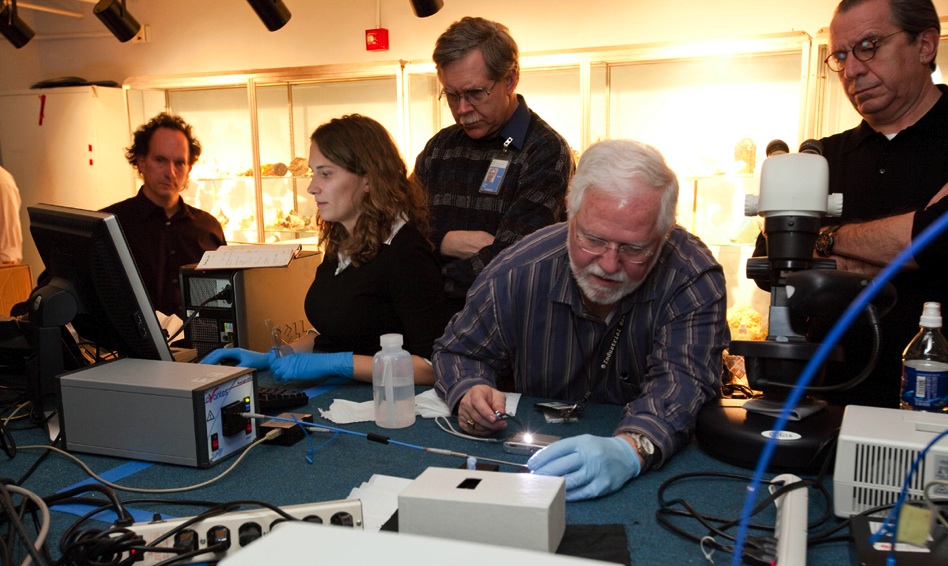
It’s official, as of yesterday: The famous Wittelsbach-Graff diamond did not come from the same stone as that other rare and storied blue diamond, the Hope, despite amazing similarities.
The two share “similar histories but were clearly found as separate stones,” said Jeffrey Post, curator of the Smithsonian’s gem and mineral collection, at the unveiling yesterday.
The stones, Post announced, are “not brother and sister but distant cousins” – a conclusion reached after extensive testing at the museum (pictured below). More tests will be done in the next six months.

At 45.5cts, the Hope is significantly deeper – a difference you can clearly see when viewing the stones from the side – and, thus, appears deeper blue. But both are similar in color, extremely rare, and stunning to behold. Both also have fascinating histories full of royal pedigree and mysterious disappearances.
The Wittelsbach took its name from the royal family of Bavaria who owned it for centuries, but it had disappeared from public view for 50 years. A colleague of Post’s once described it as “the most famous diamond the public has never seen.”

You’ll have a chance to see it now, and to compare it with to the Hope, at the Smithsonian’s National Museum of Natural History in Washington DC where they will be on display together until August. After that, the Wittelsbach-Graff may go on display at the Natural History Museum in London, according to its owner Laurence Graff.
Graff bought the 35.56ct deep blue diamond at a Christie’s auction in December 2008 for a record-breaking $24,311,191. (It’s slightly smaller now after Graff had it recut to repair damage and intensify the color.)
The stone was estimated at $15 million but Graff said yesterday he wasn’t surprised by what he ended up paying and that he had, in fact, predicted the final price to his son, François Graff, moments before the gavel came down. I looked at François, who was standing next to me at the preview, and he nodded and said, “It’s true.”

Paying record-breaking prices, well into the millions, for a single stone is not unusual for Laurence Graff. He has been snagging the top lots in major jewelry auctions for several years, always willing to pay top dollar, and this ability to procure the world’s finest gemstones has made him billions of dollars. “It’s what we do,” his son said yesterday with a shrug. “But it’s become much more expensive.”

